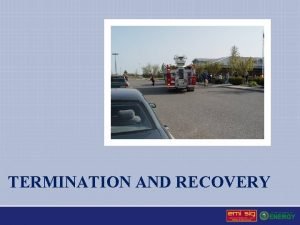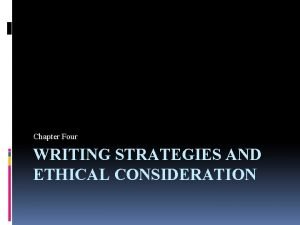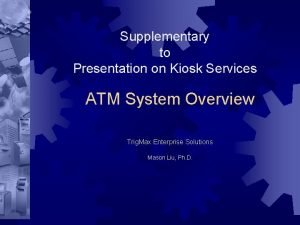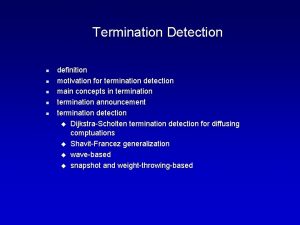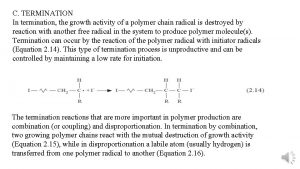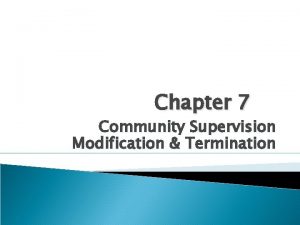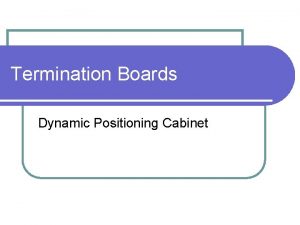TERMINATION AND RECOVERY Termination of the Emergency Considerations








- Slides: 8

TERMINATION AND RECOVERY

Termination of the Emergency Considerations for event termination • If the Emergency Operations Center (EOC) has not been activated, the facility organization and Incident Commander (IC) declare termination of an event after applicable criteria have been met • If the EOC has been activated, the IC and EOC confer and agree the event can be terminated

Termination of the Emergency (cont. ) Considerations also include • Termination shall be coordinated with applicable offsite agencies • Emergencies, once categorized, must not be downgraded to a lower significance category unless the original categorization was incorrect • An event determined to be an emergency will remain so until the emergency response is terminated. • In general, the emergency classification (i. e. , Alert, Site Area Emergency, General Emergency) should not be downgraded until termination of the event. However, emergency classification must be reviewed periodically to ensure the classification is commensurate with response activities.

Termination Criteria Considerations • Predetermined criteria for termination of emergencies must be established/developed • The means must exist for estimating exposure to hazardous materials and for protecting workers and the general public from exposure during reentry and recovery activities

Recovery Phases The recovery phase is defined as the period beginning after the emergency has been terminated and is divided into two phases • Intermediate phase (also called reentry phase) o Assessments of effects of the release are implemented to estimate its extent and to determine if additional protective actions should be taken to reduce chronic exposures • Late phase o Assessment and mitigation activities are implemented that ensure hazardous materials levels in the environment are at acceptable standards, allowing resumption of all normal activities o This phase involves a complete assessment of all potentially affected areas

Principles of Recovery When an EOC is activated, recovery steps may include • Coordinating with onsite/offsite agencies • Determining public health and safety impact • Identifying equipment and mobilizing assessment teams • Coordinating with the EOC Manager to appoint a long-term Recovery Manager

Recovery Procedures Recovery procedures must include • Dissemination of information to federal, state, tribal, and local organizations regarding the emergency and possible relaxation of public protective actions • Planning for decontamination actions • Establishment of a recovery organization • Development of reporting requirements • Establishment of criteria for resumption of normal operations

Recovery Tasks Involve • Defining the operational and environmental impact • Establishing entry requirements for evacuated areas/facilities • Defining event-specific tasks to be accomplished • Identifying environmental monitoring and restoration requirements • Identifying near-term/long-term safeguard and security requirements
 Emergency action termination
Emergency action termination Writing strategies and ethical considerations
Writing strategies and ethical considerations Ethical issues in experimental research
Ethical issues in experimental research Pricing considerations and approaches
Pricing considerations and approaches What are the general considerations in machine design
What are the general considerations in machine design Tax considerations for setting up a new business
Tax considerations for setting up a new business Software architecture of atm machine
Software architecture of atm machine Three considerations of societal marketing concept
Three considerations of societal marketing concept Mechanical design of transmission line
Mechanical design of transmission line
